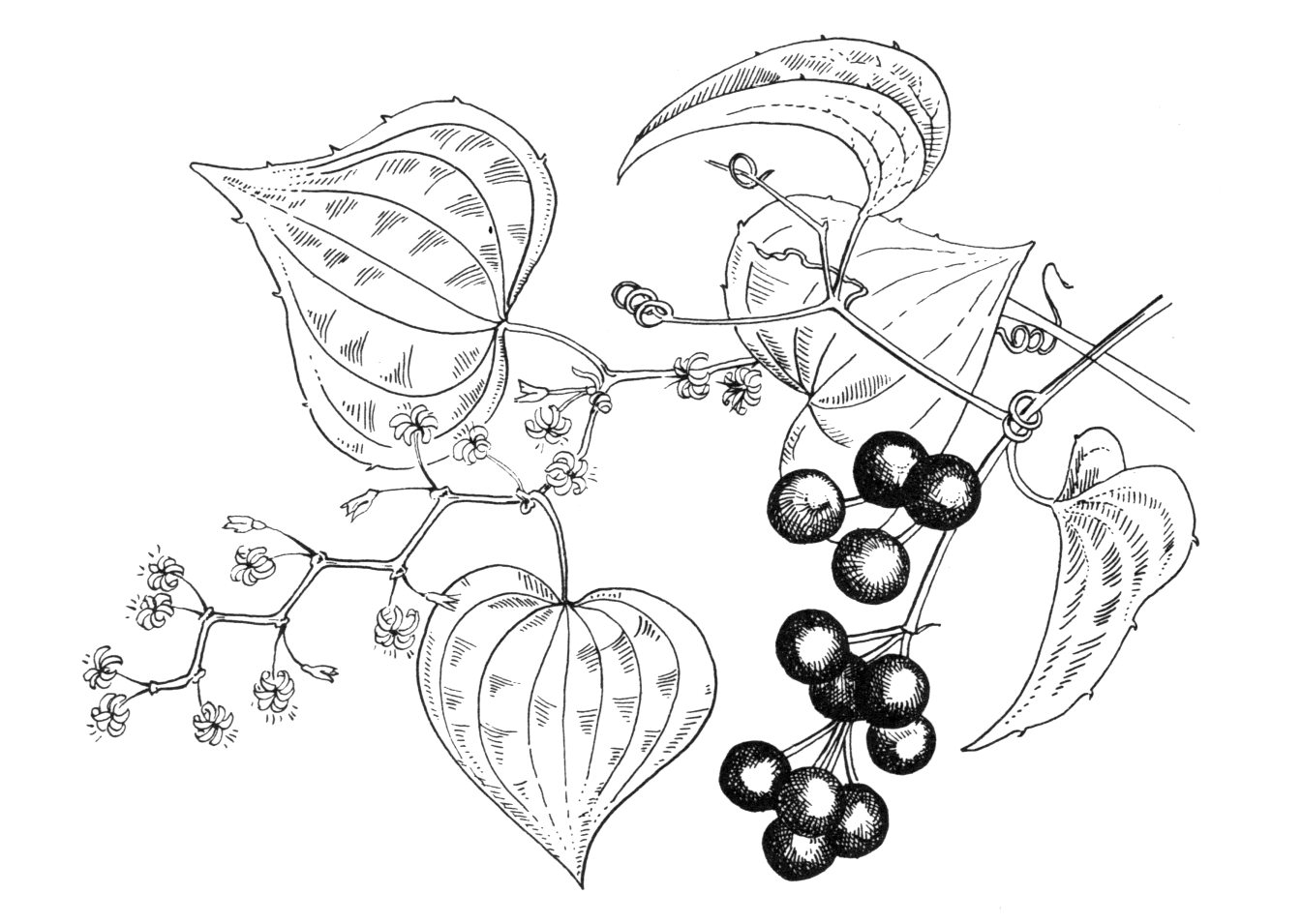Smilax aspera
Credits
Article from Bean's Trees and Shrubs Hardy in the British Isles
Recommended citation
'Smilax aspera' from the website Trees and Shrubs Online (treesandshrubsonline.
Genus
Common Names
- Rough Bindweed
An evergreen, semi-scandent plant with four- to six-angled stems and zigzag branches, armed with short, stout spines. Leaves very diverse in shape and size, but nearly always more or less heart-shaped at the base, and prickly on the margins, sometimes on the midrib also. As seen in cultivation the usual type of leaf is of a narrow, elongated, ovate shape, broadest almost or quite at the base, abruptly narrowed above the base, then tapering gradually to the point, five- to nine-nerved; sometimes the base is quite straight, and the leaf an elongated triangle; sometimes the leaf is heart-shaped and nearly as broad as long. They measure from 11⁄2 to 4 in. long, 3⁄4 to 3 in. wide; stalk spiny or unarmed, 1⁄4 to 1 in. long. Flowers pale green, fragrant, produced in terminal and axillary racemes, along which they are arranged in clusters of four to seven; the racemes vary from 11⁄2 to 4 in. long, and the flower-stalk of the individual flower is 1⁄12 to 1⁄3 in. long. Fruits about the size of a pea, red.
A species of wide distribution, from the Mediterranean region and the Canaries to India and southern Central Asia; cultivated in Britain since the mid-17th century. It is not reliably hardy in the colder parts of the country, and used to be commonly grown in cold greenhouses, where if planted out it makes a tangle of numerous stems eventually 8 to 10 ft high – a handsome cheerful evergreen, with graceful and fragrant, if not showy, flowers.

